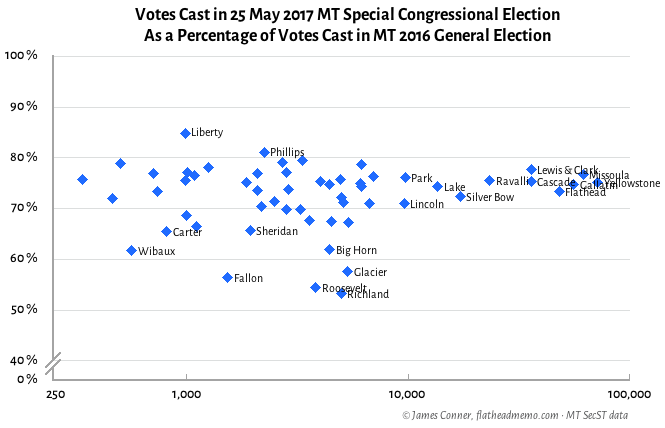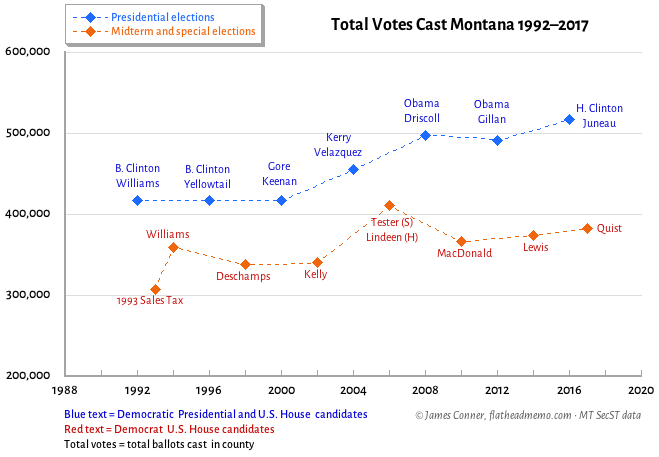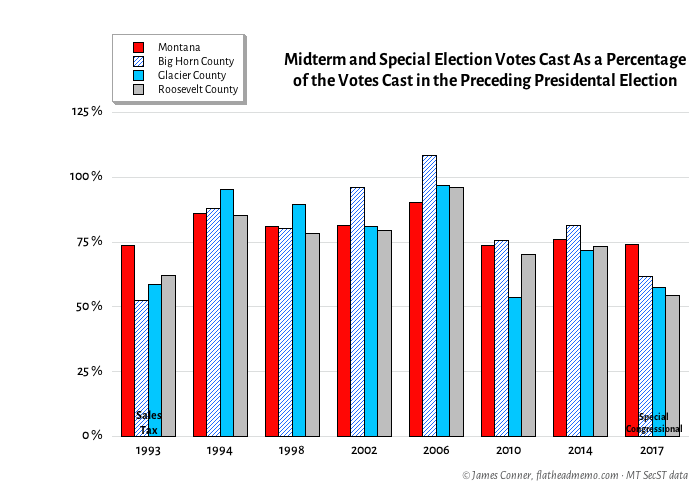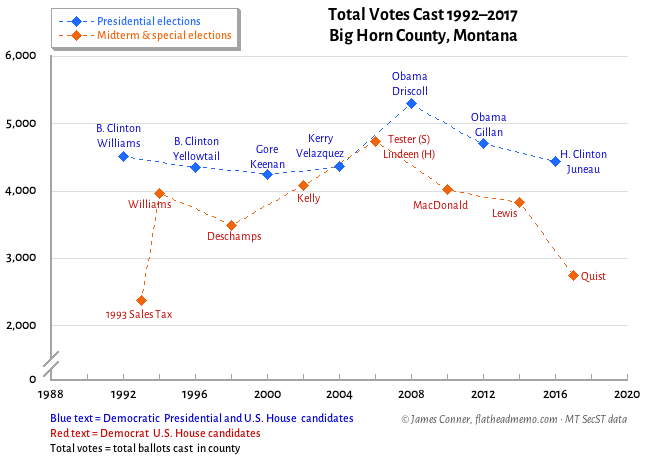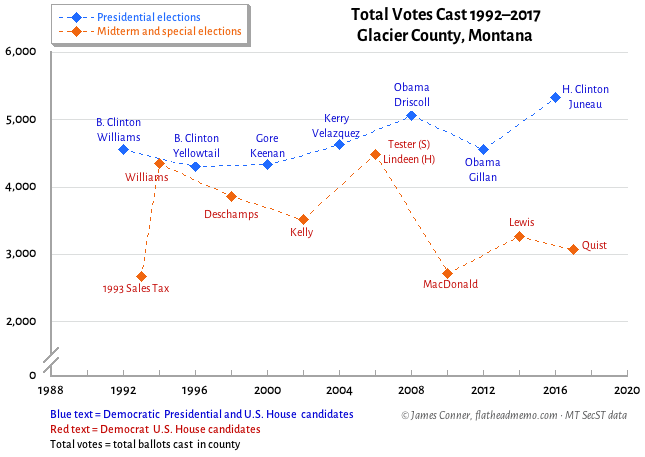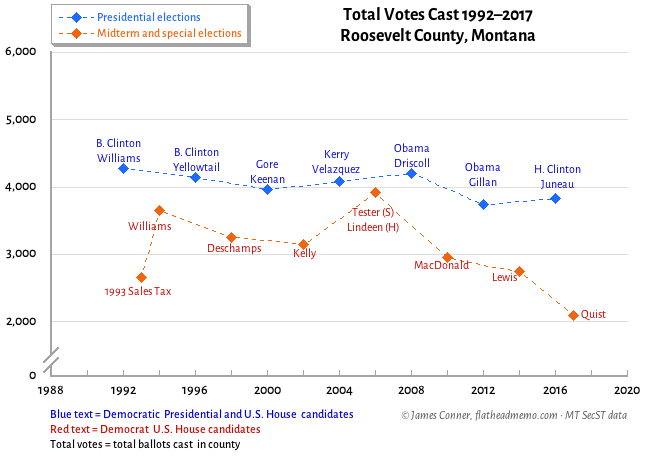20 June 2017 — 1303 mdt
Notes on voter turnout in Montana’s Indian Country
In the 2016 presidential election, 5,334 ballots were cast in Glacier County, home to the Blackfeet and legislative districts 15 and 16, two of Montana’s six Indian majority districts. Six months later, the county’s population essentially unchanged, Glacier’s voters cast only 3,077 ballots in Montana’s special congressional election.
As NPR’s Nicky Ouellet and Rachael Cramer observed last week, that was one of Glacier County’s lowest turnouts in years — a low turnout that coincided with, and possibly in part was caused by, Glacier’s opening only two polling places instead of the usual five.
Glacier was not the only low turnout county in Indian Country in the special congressional election. Turnout also was low in Roosevelt and Big Horn Counties. These three are not the only counties in Indian Country, but they can serve as a rough proxy for Indian Country as a whole.
There are several measures of voter turnout. The most common is the percentage of registered voters who cast ballots. A similar, but better, measure is the percentage of the voting eligible population (voting age minus foreign nationals, incarcerated felons, and other disqualified classes), as it avoids the problem of deadwood stuffed voter registration rolls (in 2000, Montana’s roll of registered voters was larger than the VEP). Unfortunately, reliable VEP data seldom is available at the county and precinct levels.
Two measures of turnout that avoid the bloated voter registration roll problem are the absolute number of ballots cast, and ballots cast as a percentage of the previous election. These measures are especially useful for the 2017 special congressional election and the 1993 spring special sales tax election, as these elections occurred so soon after the last general election that the population essentially was unchanged.
Turnout in May’s special congressional election as a percentage of ballots cast in the November, 2016, presidential election was lower in Indian Country than in the rest of Montana:
As Montana’s population has increased, the number of ballots cast in presidential elections has smoothly increased. But there is much more variation in midterm and special elections.
Here are the midterm and special election numbers for Montana and for Big Horn, Glacier, and Roosevelt Counties.
Below, the absolute number of ballots cast for Big Horn, Glacier, and Roosevelt Counties for 1992 through 2017.
In 2006, turnout as a percentage of ballots cast in 2004 was higher in Indian Country than in Montana as a whole. And turnout in 2006 was higher than all other general and special elections from 1992 through 2017. I believe the key variable is neither the difference in the number of polls nor the number of absentee ballots cast. It is, rather, voter enthusiasm. A motivated voter will stand in line in a cold, windy, rain for hours — but a voter who believes that voting will have no impact on his life won’t mark a ballot no matter how convenient the voting system is. The parsimony of Glacier County’s elections department made voting more difficult and less pleasant, but the turnout would have been higher had the county’s voters been more convinced that voting was both a moral obligation and an opportunity for bettering their lives.

